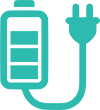Are you planning to open your convenience store but don’t know where to start? Well, you’re in the right place. After serving thousands of convenience stores in the United States, Modisoft observes the trials and tribulations of the most successful store owners and we have found one thing in common.
Most successful convenience store owners follow proven formulas and take inspiration from industry leaders to run a profitable business. But as a newcomer, you might get overwhelmed by the tons of content available on the internet.
Don’t worry, Modisoft brings you a step-by-step guide that can help you achieve what other industry leaders have done.
Why Invest in a Convenience Store In 2024?
As an entrepreneur, you might be wondering if opening a convenience store is the right step for you. Investing a lot of money comes with fear and risks. But you may be happy to know that the convenience store industry is booming. In a report released by NACS Magazine, the number of C-stores has grown and reached over 150,000 in the U.S.
As the US population stands, that means there is only one convenience store for every 2,225 people. This means that there is still a huge gap and potential for new players to enter the industry.
According to Precision Reports Insights, the convenience store market is anticipated to rise at a considerable rate between 2024 to 2031.
Thus, it’s the perfect time to step into this industry. But before you start, let’s have a look at what the future holds for convenience stores.
The Future of C-Stores
Convenience stores have been around for over 100 years and have weathered various market storms that other industries have struggled with. A C-store in itself is a commodity, and that’s the biggest reason why it is still a profitable and popular business in the era of online retail culture.
But there is no one-fit formula for all. Convenience stores, regardless of the location they choose, need to adopt modern technology and stay updated with the latest trends to cope with the market. Think of an old convenience store that refuses to upgrade and still contains the manual checkout process, poor lighting, and no option for curbside pickups. Do you think that store can sustain its presence? Never. Put yourself in the customer’s shoes. Would you consider a convenience store that has no convenience at all?
Although the future holds a lot of potential for convenience stores to grow, you need to be quick in adapting to those changes to survive and thrive.
How to Open a Convenience Store in 2024
Now that you are aware of the C-store and its future, it’s time to know how to enter the market. Just like any other business, convenience stores also need solid research, time, and money. There are crucial steps that you need to know before you start your convenience store in 2024.
To make the process easy for you, Modisoft shares all the steps that are necessary to know before starting a C-store in the United States.
Step 1: Convert Your Idea into a Solid Business Plan
Convert your idea into a business plan to ensure that you are on the right track. Many entrepreneurs often miss this crucial step that ultimately becomes one of the reasons why businesses fail. A business plan helps you clearly outline purpose, operations, strategy, and goals.
Above all, it can be of great help when looking to obtain bank financing or securing a loan from other lenders. The key components of a solid business plan include
- Executive Summary
- Business Goals & Objectives
- Market Analysis
- Marketing Strategy
- Competitor Analysis
- SWOT Analysis
- USP – Unique Selling Proposition
- Financial Plan
- Overall Startup Cost
Step 2: Pick Your Convenience Store Format
You might be surprised to know that convenience stores come in all different shapes and sizes. Before you start your C-store, you need to plan out what segment your convenience store will fall into. These are just a few options that are available to you.
- Kiosk– If you are looking to go for a small startup, Kiosk is the perfect format. It generally occupies less than 800 square feet and sells items like tobacco, beverages, snacks, and candy.
- Mini Convenience Store- This store usually occupies 800 to 1,200 square feet and is a very popular model that runs alongside gas stations. It usually emphasizes gasoline sales, and most customers are people who refuel at gas stations.
- Limited Convenience Store- These types of stores are often affiliated with an oil company. Extended hours and striped parking are common in these types of C-stores. They have a broader product mix along with limited groceries.
- Traditional C-Store- This C-store category is very popular in the United States. The stores are about 2,500 sq feet and have product categories ranging from dairy, bakery, and snacks, to grocery, sweets, and much more. They are often open 24/7 and owned by oil companies.
- Expanded C- Store- These fall into the large stores category and have more shelving for additional grocery products. The expanded C-store occupies more than 3,000 square feet (about the area of a tennis court). They have proper seating, and parking facilities that attract families, women, and seniors.
- Hyper C-store- The hyper C-store covers up to 5,000 square feet and accommodates a variety of products and departments. They have a separate sit-down restaurant area, sometimes a pharmacy, and they often offer a bakery. Most customers are families, senior citizens, and traditional C-store customers.
Step 3: Select Your Location Wisely
Location plays a vital role in making or breaking a business. Selecting the wrong location can cost you thousands of dollars. If your location isn’t desirable, you won’t be able to attract enough customers, which results in lower sales and profits. Therefore, you need to take time to select your location. You need a spot that can be easily viewed, without an existing convenience store.
Location selection depends on various sectors including but not limited to
- Research the audience demographics that spend most of their time in that area
- If there is any existing store, try to connect with them to get a clear idea of the number of customers they get per day or week.
- Track foot traffic by utilizing any local company’s expertise.
Step 4: License & Permits You Need to Open a Convenience Store
As soon as you’ve formed your business and found an ideal location it’s time to start working on getting licenses and permits. If you’re planning to sell all those popular products that a convenience store usually sells such as alcohol, tobacco, and lottery tickets, then you need to get permits from the state or local government.
Although it is recommended to check with your state’s law, the most common permits needed to open a C-store are:
- Lottery License
- Sales Tax Permit
- Health & Safety Permits
- Occupancy Permit
- City or Country Business License
- Environmental & Other Fuel Permits
Step 5: Connect With the Right Wholesaler
Your C-store cannot be profitable if you don’t stock the right products. You need to stock the most popular items that customers are more likely to purchase. But how should you stock your convenience store? As someone new in the industry, you might have trouble connecting with wholesalers.
Don’t worry, connecting with the right wholesaler doesn’t have to be a complex task. You can go with the following key tips that can help you to stock your convenience store.
- Become a NACS Member- Joining a tradeshow can give you the exposure of a whole convenience store community. You can explore new products, market trends, vendors, and a lot more that can help you run your business confidently.
- Directly Reach a Credible Vendor– Many vendors and brokers can help you start your convenience store. Although it will take time to reach out to different vendors to explain your needs and decide on the budget, it’s well worth it.
- Wholesale Financing- It doesn’t have to cost tens of thousands of dollars to stock a C-store when you have wholesale financing. Wholesalers can offer credits that let you pay for your inventory within 30, 60, or even 90 days.
Step 6: Convenience Store Layout & Equipment
Remember that the convenience store business is built on a “grab-and-go” model. It allows customers to be in and out in just a few minutes. Therefore, the C-store layout and design hold the utmost importance in making it successful.
The key to a steady convenience store sale is a shop layout that brings convenience to the shoppers. With the right equipment, you can make everything accessible. The following is the list of must-have equipment to operate a convenience store comfortably.
- Racks & Display Cases- You’ll need to put all your ready-to-use, eat-and-drink items in sturdy and spacious racks. You can install display cases, microwaves, coffee machines, cutlery, and condiment dispensers for hot drinks and pre-packed snacks.
- Refrigeration Equipment- Refrigeration equipment such as walk-in coolers, display freezers, and open-air display coolers are necessary to store perishable items, beverages, and ready-to-eat meals.
- Security System- It is essential to install a modern high-tech security system with cameras and a panic alarm button to prevent theft and ensure the safety of your store.
- POS System- A complete POS system such as Modisoft POS can be of great help in making a smooth checkout process. You can scan data, manage sales, and can also provide your customers with online ordering.
Take Your First Step to Open a Successful Convenience Store
Opening a successful convenience store takes time, money, and planning. By reading the above steps you can easily take your first step towards opening a successful c-store. Remember that the key is to stay with the trends, invest in technology, and keep your costs low.
FAQs
1) What Is a Convenience Store?
A convenience store is defined as a retail business that provides the public with a convenient location to make quick purchases. It stocks a variety of consumable products and services, generally food and gasoline.
2) How Much Does It Cost to Open a Convenience Store?
Starting a convenience store can typically cost anywhere between $50,000 to $100,000. However, it can go as low as $10,000 depending on the type of C-store you are planning to open. Usually, the initial amount is invested in rent, inventory, deposits, and equipment.
3) What Is the Profit Margin in a Convenience Store Business?
A convenience store’s profit is not fixed and usually depends on the overhead expenses, rents, etc. It also highly depends on the type of products you are selling. For instance, according to Statista, health and beauty products have the highest profit margin in the U.S.























